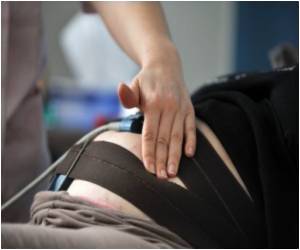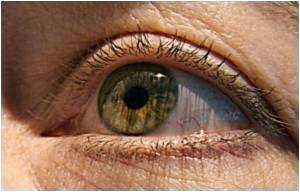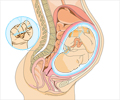A novel, minute-long procedure to prepare human amniotic membrane was designed and tested by researchers for use as a scaffold for specialized stem cells.

Corneal blindness affects more than 8 million people worldwide. Among other causes, corneal blindness can be the outcome of corneal stem cell deficiency, a disease usually resulting from genetic defects or injury to the eye — such as burns, infection or chronic inflammation — that can lead to vision loss. A feasible treatment to rectify vision loss for such patients is corneal stem cell transplantation, either as a biopsy from another eye or by transplanting cultured stem cells, although this promising approach is not yet fully standardized.
An approved biological foundation for cultured stem cells is the human amniotic membrane, a thin but sturdy film that separates the fetus from the placenta. For the best growth of stem cells, amniotic cells need to be removed by chemical agents. The existing methods for removing these cells from this membrane are not standardized, leave behind amniotic cells and may cause unwanted loss of some of the membrane components.
The amniotic cell removal method created at Cedars-Sinai takes less than one minute and ensures virtually complete amniotic cell removal and preservation of amniotic membrane components, and also supports the overall growth of various stem and tissue cells.
"We believe that this straightforward and relatively fast procedure would allow easier standardization of amniotic membrane as a valuable stem cell support and improve the current standard of care in corneal stem cell transplantation," said lead author Alexander Ljubimov, PhD, director of the Eye Program at the Cedars-Sinai Regenerative Medicine Institute. "This new method may provide a better method for researchers, transplant corneal surgeons and manufacturing companies alike."
Mehrnoosh Saghizadeh Ghiam, PhD, a research scientist in the Regenerative Medicine Institute's Eye Program, assistant professor in the department of Biomedical Sciences and first author of the study, commented on the potential of the new method.
Advertisement
The study was conducted by a research team that includes co-author Katerina Jirsova, PhD, from the Charles University in Prague, Czech Republic, the director of the Cedars-Sinai Regenerative Medicine Institute Clive Svendsen, PhD, Yaron Rabinowitz, MD, director of the Division of Ophthalmology Research at Cedars-Sinai and Dhruv Sareen, PhD, director of the Regenerative Medicine Institute's iPSC core facility. The Eye Program is in the Cedars-Sinai Regenerative Medicine Institute and collaborates with the Cedars-Sinai department of Neurosurgery and the Cedars-Sinai Medical Genetics Institute.
Advertisement
Source-Eurekalert















